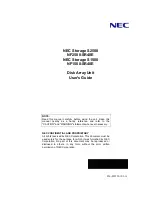
W632GU6NB
Publication Release Date: Aug. 20, 2018
Revision: A01
- 93 -
8.19.4.3 Asynchronous to Synchronous ODT Mode Transition during Power-Down Exit
If DLL is selected to be frozen in Precharge Power Down Mode by the setting of bit A12 in MR0 to “0”, there is also a transition period around power down
exit, where either synchronous or asynchronous response to a change in ODT must be expected from the DDR3L SDRAM.
This transition period starts t
ANPD
before CKE is first registered high, and ends t
XPDLL
after CKE is first registered high. t
ANPD
is equal to (WL - 1) and is
counted (backwards) from the clock cycle where CKE is first registered high.
ODT assertion during the transition period may result in an R
TT
change as early as the smaller of t
AONPD
min and (ODTLon*t
CK(avg)
+ t
AON
min) and as late
as the larger of t
AONPD
max and (ODTLon*t
CK(avg)
+ t
AON
max). ODT de-assertion during the transition period may result in an RTT change as early as the
smaller of t
AOFPD
min and (ODTLoff*t
CK(avg)
+ t
AOF
min) and as late as the larger of t
AOFPD
max and (ODTLoff*t
CK(avg)
+ t
AOF
max). See Table 13.
Note that, if AL has a large value, the range where R
TT
is uncertain becomes quite large. Figure 85 shows the three different cases: ODT_C,
asynchronous response before t
ANPD
; ODT_B has a state change of ODT during the transition period; ODT_A shows a state change of ODT after the
transition period with synchronous response.
T0
T1
T2
Ta1
CK#
CK
Ta2
Ta0
Command
Ta3
Ta4
Ta5
Ta6
Tb0
Tb2
Tc0
Tc1
Tc2
Tb1
Td0
Td1
RTT
CKE
NOP
NOP
NOP
NOP
NOP
NOP
NOP
NOP
NOP
RTT
RTT
RTT
Last sync, ODT
RTT
Sync or async, ODT
RTT
First async, ODT
t
AOF
min
O t
AOF
max
t
AOFPD
min
O t
AOF
min
PD exit transition period
t
XPDLL
t
AOFPD
max
t
AOFPD
min
NOP
NOP
NOP
NOP
NOP
t
AOF
max
ODTLoff
t
AOFPD
max
TRANSITIONING
DON'T CARE
t
ANPD
TIME BREAK
Figure 85
– Asynchronous to synchronous transition during Precharge Power Down
(with DLL frozen) exit (CL = 6; AL = CL - 1; CWL = 5; t
ANPD
= WL - 1 = 9)
















































